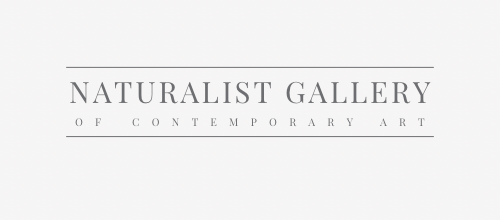Securing artist grants can be a game-changer in your creative journey, offering financial support for your projects and alleviating the day-to-day financial pressures.
An artist grant is financial support provided by institutions like nonprofits, museums, and foundations to fund artists' projects and creative pursuits, helping cover expenses and fostering artistic growth.
To secure an artist grant, research grants aligned with your work, tailor applications to their criteria, emphasize your artistic vision, showcase impactful work samples, and adhere to deadlines.
Explore our curated selection of contemporary artists from around the globe.
Naturalist Gallery offers artist representation internationally. Apply your art.
Whether you're a seasoned artist or just starting out, understanding the grant application process is crucial for success. In this guide, we'll break down the key aspects of artist grants, from understanding what grants are to the strategies that can help you secure funding.
What Are Artist Grants?
Artist grants are financial awards provided by nonprofits, philanthropies, museums, universities, and other institutions to support artists' projects and creative endeavors. These grants can range from modest amounts to substantial sums and can be used for general support or specific project-related expenses.
Types of Grants and How to Apply
Grants can be broadly categorized into two types: general support and project-specific grants.
-
General Support Grants: These grants help cover recurring expenses such as studio rent, supplies, and salaries.
-
Project-Specific Grants: These grants are tailored to fund specific initiatives outlined in your application.
To apply for a grant, you need to research opportunities that align with your artistic practice and project goals.
-
Research: Look for grants that match your creative discipline, geographical location, and identity.
-
Guidelines: Carefully read the guidelines provided by the grant-giving organization and follow the application instructions.
Crafting Your Application
When preparing your application, pay close attention to three key elements:
-
Artist Statement: Succinctly convey your artistic vision and how your proposed project aligns with it.
-
CV (Curriculum Vitae): Highlight your most relevant achievements and experiences.
-
Work Samples: Select samples that showcase your skills, creativity, and the potential impact of your project.
Standing Out in the Application Pool
Different grants have distinct evaluation criteria.
-
Image-Based Evaluation: Some grants prioritize images of your work to assess your artistic quality.
-
Holistic Evaluation: Others consider your artist statement and CV to understand your artistic journey and experience.
To maximize your chances, research the grant's specific requirements and tailor your application accordingly.
Timing and Organization
Grants often have specific application deadlines, so it's essential to manage your time effectively.
-
Create a Schedule: Develop a timeline that allows you to gather materials, write your application, and proofread it well before the deadline.
-
Early Submission: Submitting early gives you time to address any unexpected technical issues that may arise.
Tailoring Your Application
Each grant opportunity is unique.
-
Research the Organization: Understand the grant-giving organization's priorities, values, and past recipients.
-
Alignment with Mission: Craft your application to demonstrate how your project aligns with their mission and how you can contribute to their goals.
Overcoming Rejection
Rejection is part of the process.
-
Continuous Improvement: Instead of getting discouraged, use rejection as an opportunity to refine your application and reapply in the future.
-
Seek Feedback: Seek feedback from peers, mentors, or those familiar with the grant review process to improve your application's chances.
View limited edition prints by contemporary artists at Naturalist Gallery.
Artist grants are a valuable resource for artists seeking financial support for their projects. By understanding the application process, tailoring your submissions to match the grant's criteria, and honing your application materials, you can increase your chances of securing funding. Remember that perseverance and continuous improvement are key to successful grant applications.
You may also find the following articles helpful:
The Fine Art Enthusiast's Guide
Corporate Takeover of the Art World
Art Criticism: Evaluating Contemporary Art
Art Consultants in the Contemporary Art World
The Art Advisor's Guide: Navigating the Art Market
How Art Agents Work with Contemporary Artists











